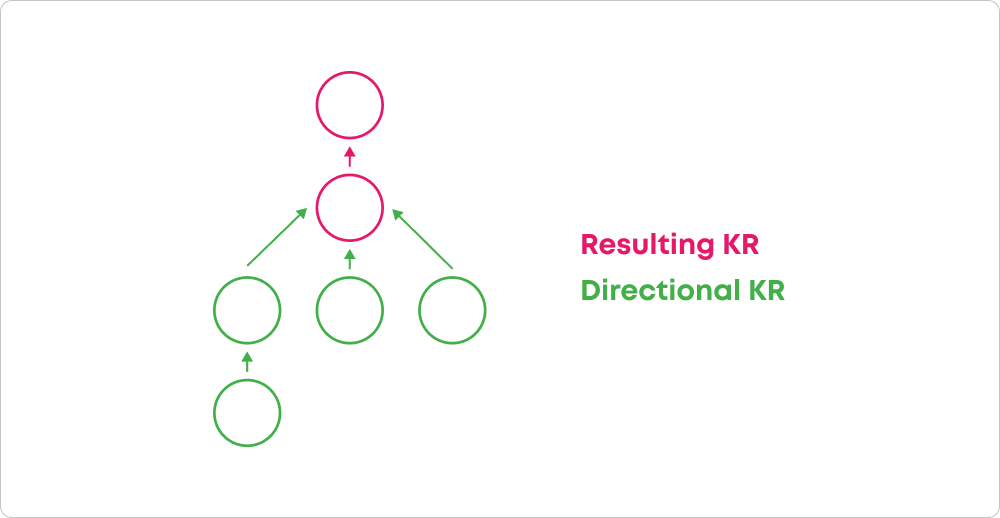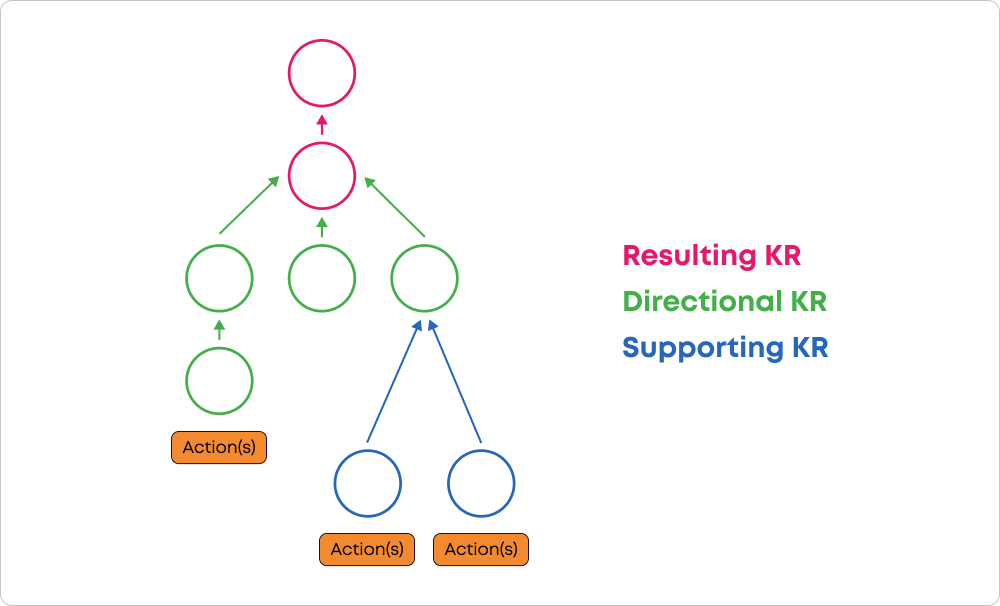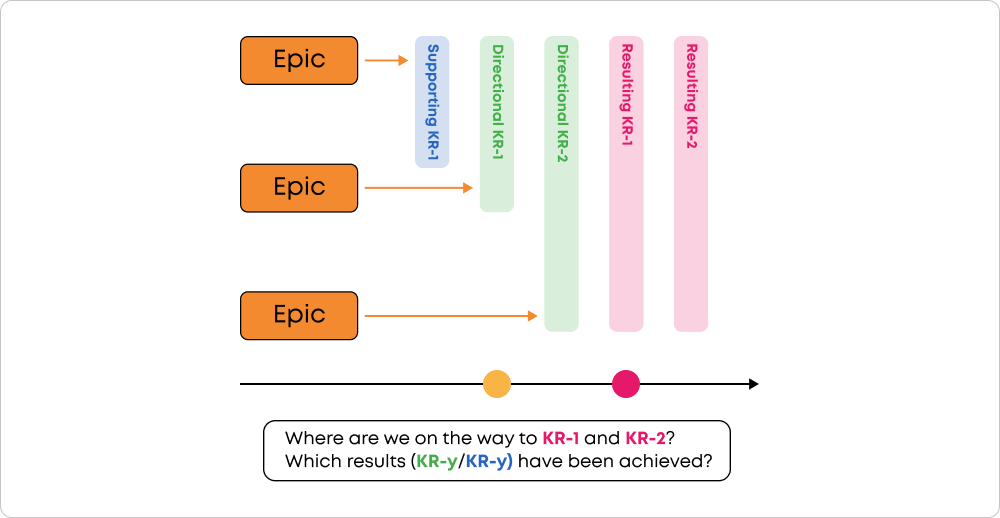The OKR (Objective Key Results) method has been gaining increased popularity in the last years as an objectives management approach. The framework can be used both for development goals, i.e., changing the status quo in the company, as well as for product goals.
Unfortunately, the OKR method is very often applied with the "by the book" approach in a very dogmatic manner, keeping in mind only a few simple rules and hints coming from OKR "pioneers".
Often, such a dogmatic approach, relying on copying "good practices", does not deliver the expected results but rather leads to disappointment. Managers tend to think that OKRs would significantly improve objectives management; however, the end result is often "¦ as usual.
I am always saying: "The method exempts not from thinking". Unfortunately, the seemingly apparent simplicity of OKRs hides quite a big trap, especially when simplicity transforms into an oversimplification of business reality.
In this article, I will present one of the key simplifications and show how to cope with it to get real business results with the application of the OKR framework.
Oversimplification of Key Results
The simplification concerns probably the most important element of the OKR method - the Key Results (KR). In the classic, traditional description and application of the OKR framework, it is assumed that:
A key result is the expected result, and it should be described with a number; otherwise, it is not a KR (that statement can be found in many articles about OKRs)
The collection of KRs connected with an objective enables to measure OKRs and, more specifically, if the objective has been reached or not.
And that's all! Simple and beautiful!
So, I will ask questions asked in similar, apparently simple, and obvious situations by Eliyahu Goldratt: "Really? Is such a simple description of KRs enough to effectively and efficiently manage objectives not only during their definition and planning but also during execution and review of the KRs status? Or are there some other points which should be considered to effectively manage objectives?"
Based on my few years of experience with the OKR method, the answer is: "No", such a simplistic approach to KRs is not enough. Some additional elements are required.
What Are Three Types of Key Results?
For effective and efficient objective management (both the development and product objectives), the classic KRs are not enough. We need a collection of three types of KRs, namely:
- Resulting KRs
- Directional KRs
- Supporting KRs
1. Resulting Key Results
First, we should note that the classical KR is usually the result, oftentimes being the yearly target result for the company. Therefore, a resulting key result is a lagging indicator, which:
Can be defined relatively easily, as it involves the key company business metrics
Can be measured post-factum or at the end of the defined period, as it does not answer the question if we are executing the right actions during that period
Changes seldom, and its change of value is usually the result of various activities, executed by teams across different business areas of the company.
From the above-mentioned points, one key weakness of classical KRs is clear: if the KR can be calculated post-factum and I am not able to identify on the fly, during that period, if the actions are influencing the result, how can I know if I am heading in the right direction? I don't know if our actions are really leading us toward the planned results.
In my opinion, the key element in effective objectives management is the road towards the goal, which is much more important than mere goals, in that case, the key result.
2. Directional Key Results
Therefore, what we need to effectively and efficiently manage goals are so-called directional KRs. These key results partially define the results to be achieved on the road to the grand objectives. They deliver the answer to the following question: are we heading in the right direction? Are the activities we execute effectively and leading to the expected results? In other words, these key results are leading indicators.
Directional KRs can be described as intermediate points on the road to the final goal. When we reach such an intermediate point, we can say that - step by step - we are approaching our goal. Depending on the context: either the development or product goal.
Directional key results:
- Are much more difficult to define, as they comprise the correlation between directional KRs and the resulting KRs, and usually represent a hypothesis
- Are changing much more often because they can be a direct result of activities conducted by a specific team, thus confirming the correlation (but not the causation) between activities and result
- Can be measured in a shorter period, for example, 2 or 4 weeks, or at the end of the defined period, month, or quarter; therefore, they help to identify in a timely fashion if a specific activity has any influence on that result.
Are the practical prognostic of success, i.e., the achievement of the result.
In such a way, we now have two types of KRs: final, resulting KRs, and directional KRs, i.e., showing intermediary results.
Leveraging the information provided by both resulting and directional key results is a helping mechanism to monitor and analyze the effectiveness of realized actions.
But that's not all. For effective goal management, we need an additional type of KRs.
3. Supporting Key Results
I call these key results supporting. They support the achievement of directional KRs. Examples of supporting OKRs can be:
Knowledge gained during the analysis of a problem
The descriptions of the current state in the domain, which we plan to improve
Development of tools, products, templates, etc.
All the above are input elements required for the achievement of a directional goal.
| Resulting KRs | Directional KRs | Supporting KRs |
| Concern overall business goals | Show the road to the resulting KRs | Support and enables the achievement of directional KRs |
| Can be measured post-factum | Can be measured nearly immediately | Very easy to measure quickly |
| Business type, defined at the company or business area level | About intermediate results, i.e., the road to resulting KRs | About: product, tool, knowledge, etc. |
| Activities are not easily linked with KR | Activities can be directly linked with KRs | Can be measured via checklist |
My gathered experience shows that thanks to those three types of KRs, we are getting precise mechanisms to get results, like a compass when hiking through the mountains. In other words, we fulfill resulting KRs, through achieving directional KRs and thanks to the created supporting KRs.
But is that all there is to achieve our goals successfully? We need one more thing.
The Net of Key Results
What else is needed to manage your objectives effectively is the net of interrelated KRs of those three types.
To illustrate the net of KRs, I will use the metaphor of hiking in the mountains, like my favorite Beskid Niski in the southeast of Poland. My goal is to reach a mountain hut called Radocyna. However, I can treat that goal as an intermediary final goal, the first in a series of more distant goals, which can be crossing the border and getting to the mountain hut in Slovakia.
In the business world, such an intermediary resulting goal (KR) can be the number of customers buying the license of the software created by our company. The next business goal can be growing revenues from the intermediary result. After all, without the customers who bought the license, we will not have any revenue. We are, therefore, "fighting" in the first place to obtain the specific number of customers for the license - that's the intermediary goal or KR. And the next goal (KR) is reaching the desired revenue level.
That reasoning shows that we have the interrelation: proximal (i.e., intermediary) KR and further KR. So, we have two nodes and two resulting KRs in the network of KRs.
As you remember, we also have directional KRs. Relating to the metaphor of mountain hiking, these are the signposts showing that we are on the right way to Radocyna hut. When hiking, I will also walk past the other signposts. Each of them should confirm my hypothesis: I am on the right way to the destination - Radocyna hut. So, I am getting the confirmation that, step-by-step, I am approaching the resulting KR, i.e., my goal.
The described example illustrates that we can have a linear connection of directional KRs, showing that we are on the right path to the resulting KRs. But where is that net of KRs?
Again, I will answer using the mountain hiking metaphor. I can reach my final goal (resulting KRs) by hiking alternative paths. When hiking, I will choose just one of the available alternatives. However, in business, we can choose many ways to reach our final business goal, i.e., KR. In that way, we get the network of KRs: resulting KRs as well as a network of potentially many directional - intermediary KRs.
Such a network is presented in the following figure.

Now, when we will also add supporting KRs to the network, we will get the network illustrating the relations (links) between all KR types.
To get the full picture covering everything in goal management, we need to add the actions, i.e., activities, like initiatives, epics, or small tasks, executed by the teams applying the OKR framework. That would include the resulting KRs, which we plan to achieve, and also the directional KRs (with alternative paths of them) together with supporting KRs and, finally, actions: initiatives, epics, or tasks.

Key Result Types During Periodical Check-ins and Reviews
But that's not all. There are two additional points of consideration.
First: the above-presented picture is just a snapshot of the current moment. The VUCA world is characterized by volatility and ambiguity; it's dynamic. In practice, it means that supporting KRs, as well as directional KRs, can change. New KRs can be added together with the verification of hypotheses regarding the influence of directional KR on other directional or resulting KRs.
Also, the actions can change. Some can be modified or interrupted, and some can be added because of gathering experiences, learning, and verification (or not) of hypotheses about the correlation between an action and directional or resulting KR.
Second: OKRs are not only about planning the goals or building an initial network of KRs and actions and their subsequent update. In my opinion, the OKR method is primarily about the execution of actions, doing reviews (check-ins), i.e., learning, gathering experience, drawing conclusions from the realized activities, and from achieved - or not achieving - results.
The described network of KRs can be applied during periodical OKR cycle reviews (check-ins), as presented in the following figure.

The Pragmatic Approach to OKRs
The pragmatic view of OKR that we presented in this article is currently being applied by a production company that started using the OKR framework for managing its development goals. We are successfully applying the approach through the implementation of the Kanbanize platform, which helps us manage the development of our new business: product and training, and consulting.
With the types of KRs described here, we have a pragmatic OKR method, which in our case, works and delivers the expected business results.
Author's bio: Jerzy Stawicki is an expert with over 25 years of experience in project and project portfolio management, helping companies, managers, and teams to work smarter, in a more effective way, and to get more satisfaction. His specialty is Flow Management, based on Lean, Kanban, TOC, and applying the psychology of Flow. And also pragmatic implementation of extended OKRs (Objective Key Results). He is a big fan of Flow simulations: TeamFlow, ProjectFlow, and PortfolioFlow.

Jerzy Stawicki
Guest author
Jerzy Stawicki is an expert with over 25 years of experience in project and project portfolio management, helping companies, managers, and teams to work smarter, in a more effective way, and to get more satisfaction. His specialty is Flow Management, based on Lean, Kanban, TOC, and applying the psychology of Flow. And also pragmatic implementation of extended OKRs (Objective Key Results).



